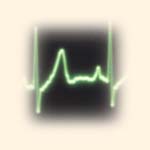
FRIDAY, May 11 (HealthDay News) — Potentially lifesaving automated external defibrillators (AEDs) are not close at hand in most cases of cardiac arrest that occur in public places, according to a new study.
Cardiac arrest occurs when an abnormal heart rhythm causes the heart to stop beating. Automated external defibrillators are devices that use electrical shocks to restore the heart to a normal rhythm.
The findings may help explain why cardiac arrest survival rates remain below 10 percent in most areas of the United States, despite AED and cardiopulmonary resuscitation (CPR) awareness programs, according to the researchers at the University of Pennsylvania School of Medicine.
For the study, the research team examined the locations of nearly 3,500 out-of-hospital cardiac arrests and the locations of more than 2,300 automated external defibrillators throughout Philadelphia County. The devices were most commonly located in schools and on university campuses (30 percent), in office buildings (22 percent) and in residential buildings (4 percent).
The investigators found that just 7 percent of cardiac arrests occurred within a 200-foot radius of an automated external defibrillator, which is about a two-minute round-trip walk from the scene of the emergency. Ten percent of cardiac arrests occurred within 400 feet and 21 percent occurred within 600 feet — a six-minute walk — of an automated external defibrillator location.
The study was slated for presentation Friday at the annual meeting of the Society for Academic Emergency Medicine in Chicago.
It’s been found that cardiac arrest victims’ chances of survival fall by about 10 percent with each minute that passes without CPR and defibrillation. Patients who receive an automated external defibrillator shock six minutes or more after suffering a cardiac arrest have very low survival rates.
“AEDs are an essential part of the ‘chain of survival’ that’s necessary to save cardiac arrest victims,” senior author Dr. Raina Merchant, an assistant professor of emergency medicine, said in a Penn Medicine news release. “Despite thousands of them in the community, our results show they are usually not readily available during cardiac arrests. Without an AED, the minutes bystanders spend waiting for paramedics to arrive could mean the difference between life and death.”
The researchers said their findings highlight the need to place automated external defibrillators more strategically in communities and to develop new ways to help the public easily find them and use them in emergencies.
Because this study was presented at a medical meeting, the data and conclusions should be viewed as preliminary until published in a peer-reviewed journal.
More information
The American Heart Association has more about automated external defibrillators.

